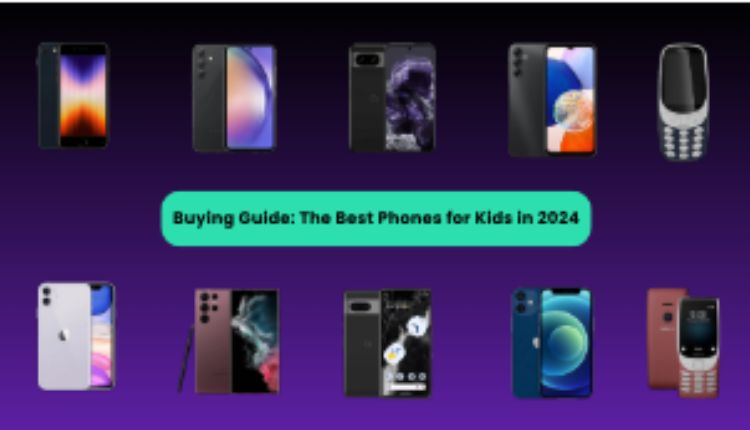The rapid evolution of technology has made smartphones an integral part of everyday life, even for children. For many parents, deciding when and what kind of phone to give their child can be a daunting task. With the plethora of options available in the market, it can be challenging to find a suitable device that meets both parental expectations and a child’s needs. This guide aims to simplify the decision-making process by providing parents with essential information on choosing the right kids phone for your child.
Understanding the Needs of Your Child
Before diving into the specifics of smartphone options, it’s crucial to consider your child’s age, maturity level, and specific needs. Younger children may require a basic phone that allows for essential communication with parents and guardians. In contrast, older kids might benefit from devices that offer educational apps, social connectivity, and entertainment options. Understanding your child’s lifestyle and responsibilities is key to determining the appropriate features and functionalities of the device.
Setting a Budget
Smartphones come in a wide range of prices, from budget-friendly models to high-end flagship devices. Establishing a clear budget is essential to narrow down your options. Factors to consider include the phone’s features, durability, and potential longevity. While it may be tempting to opt for the latest model, consider whether it is necessary for your child’s age and usage patterns. A mid-range smartphone can usually provide ample functionality without breaking the bank, especially for young users.
Essential Features to Consider
When selecting a smartphone for kids, consider the key features that will enhance their experience while keeping them safe. First, look for a device with a robust parental control system. This feature enables parents to monitor usage, set screen time limits, and restrict access to inappropriate content. Many smartphones come with built-in parental controls, but additional apps are also available to enhance monitoring capabilities.
Another critical feature is durability. Kids can be prone to accidents, so a phone that can withstand drops, spills, and rough handling is essential. Look for devices with rugged designs or those that offer cases specifically designed to protect smartphones from damage.
Battery life is also an important consideration. Kids are often on the go, and a smartphone that can last through the day without needing a charge is invaluable. A phone with a long-lasting battery will help ensure your child stays connected without the constant worry of running out of power.
Operating System and Ecosystem
Choosing between Android and iOS can significantly affect your child’s smartphone experience. Both operating systems have their unique advantages. Android offers a wider variety of device options and price ranges, while iOS is often praised for its user-friendly interface and robust ecosystem of apps. Consider the type of apps your child uses and whether they already have other devices within a specific ecosystem. This can influence your decision, as compatibility can enhance the overall experience.
Apps and Content
One of the most significant advantages of smartphones is access to educational and entertaining apps. Research popular apps that align with your child’s interests and learning needs. Many educational apps can promote learning in areas such as math, reading, and science, while also being fun to use. Additionally, consider the social media platforms your child might want to use. Ensure that the phone you choose can support these applications while maintaining safety and privacy.
Safety and Privacy Features
In today’s digital age, ensuring your child’s safety online is paramount. Look for smartphones that offer built-in security features such as biometric locks, secure browsing options, and privacy settings. Teaching your child about safe online practices is equally important. Discuss topics such as sharing personal information, recognizing online dangers, and understanding the importance of privacy settings.
Choosing a Carrier
When selecting a smartphone, consider which mobile carrier best suits your family’s needs. Research the available plans and pricing options, including family plans that offer discounts for multiple lines. Pay attention to coverage in your area to ensure reliable connectivity. Some carriers also provide phones specifically designed for kids, which may include safety features and limited plans, helping you manage your child’s usage effectively.
Setting Ground Rules
Once you have chosen the right smartphone for your child, it is crucial to establish clear ground rules for usage. Discuss screen time limits, acceptable behaviors, and appropriate content. Encouraging open communication about their online experiences will help your child feel comfortable approaching you about any concerns. Having rules in place not only helps keep your child safe but also instills a sense of responsibility regarding their device.
Encouraging Balance
While smartphones offer various benefits, it is essential to encourage a balanced approach to technology use. Encourage outdoor play, face-to-face interactions, and other activities that promote physical health and social skills. Setting aside specific times for tech-free family activities can help cultivate a healthy relationship with technology, ensuring your child understands that while smartphones are a valuable tool, they should not dominate their lives.
In conclusion, selecting the right smartphone for your child is an important decision that should take into account their age, needs, and safety. By understanding their requirements, setting a budget, and choosing appropriate features, you can find a device that will serve your child well. Establishing rules and encouraging a balanced lifestyle will help your child navigate the digital world responsibly. By making informed decisions, you can ensure that the smartphone you choose will be a positive addition to your child’s life.
Choosing the Right Smartphone for Kids


